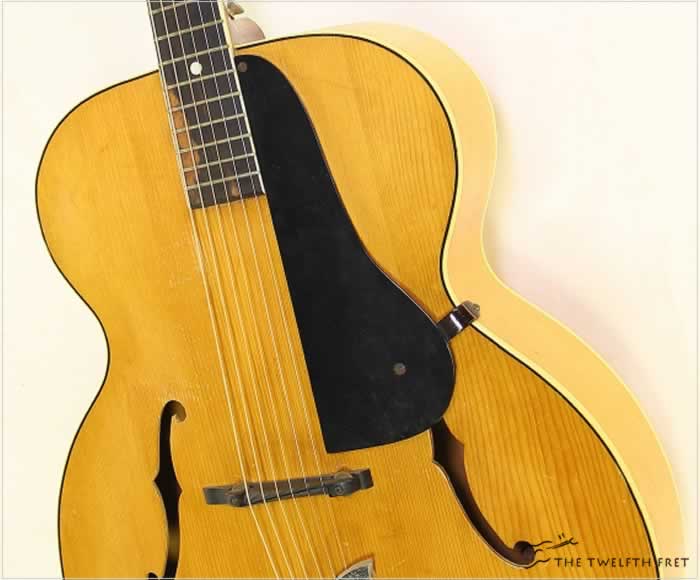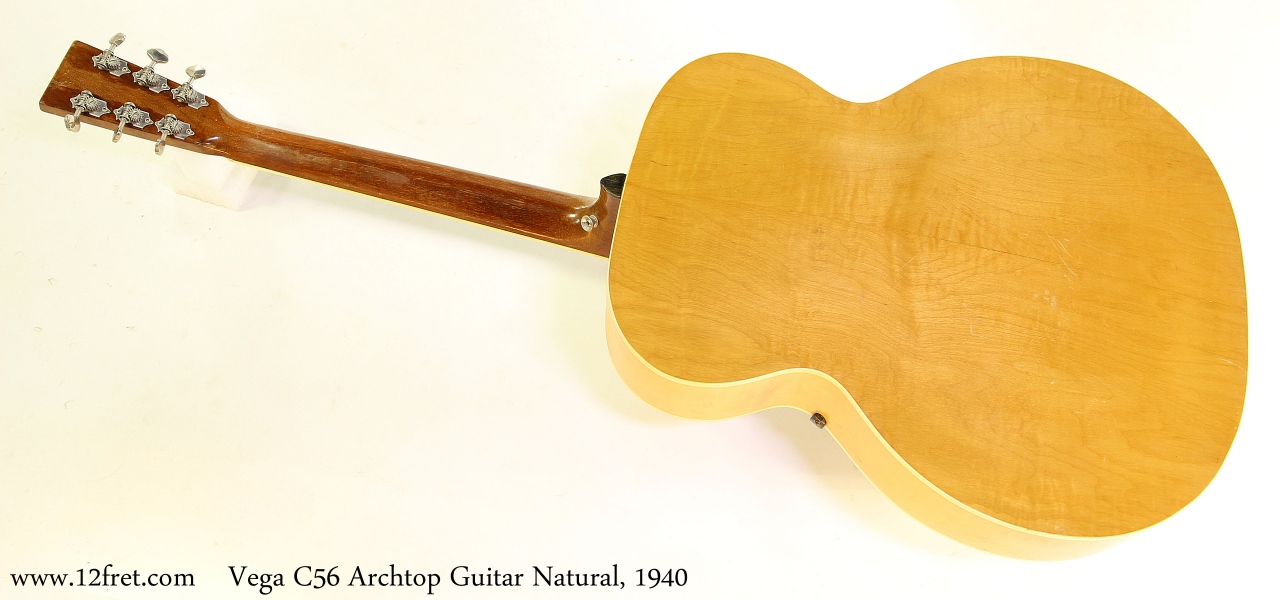


By 1939, the archtop models had been updated with new bridges and tailpieces prompting Vega to use model numbers ending in six. The C-x5-series models were only built for about two years and appear to be the least common of 1930's Vega archtops. When the high-end models were upgraded to 17” bodies around 1937, a five was added to each model. The first generation of archtops, in production by 1934, had model numbers ending in zero.

While those competitors increased their body sizes from 16” to 17” and 18” in 1935, Vega held back and only introduced 17” bodies around 1937.Unlike Gibson and Epiphone, who frequently changed the specifications of their archtop models during the 1930s, Vega changed the instruments model numbers when significant changes were made. After experimenting with cylinder-topped guitars around the turn of the 1930s, Vega began to build models that were more derivative of Gibson and Epiphone designs. While Vega’s carved-top guitars were built-like all the company's products- to the very highest quality, they were not particularly innovative. Vega had experience building high-quality guitars and mandolins long before the banjo boom of the 1920s this allowed them to thrive in the swing era while banjo-centric competitors Bacon and Lange failed. By the late 1930's Vega had successfully pivoted from banjos to guitars, with a full line of modern electric instruments as well. The neck is shallow with a "V profile typical of the era. The tailpiece is an unmarked Grover unit and the nicely sculpted bridge has an unusual base with a longer foot on the bass side. This unique plastic work is common to some of the high end Vegavox banjos as well. The fingerboard has very unusual engraved plastic block inlay and the headstock sports a fairly elaborate "Vegaphone" and "C-75" logo surrounded by shaped designs also incised into plastic and painted. It is a full 17" body carved-top guitar with a top bound in checkerboard celluloid and single bound back, fingerboard and headstock. This elegant C-75 model is roughly the equivalent to the Gibson L-12 of the late 1930's and in some ways is an even classier guitar. This very finely built Vega archtops of the 1930's remain under-appreciated instruments by players and collectors, swing era bridesmaids but rarely brides. 1938, made in Boston, Mass., serial # 38615, sunburst lacquer finish, rosewood back and sides, spruce top laminated mahogany neck with ebony fingerboard, original black hard shell case. Vega Vegaphone C-75 Model Arch Top Acoustic Guitar, c.


 0 kommentar(er)
0 kommentar(er)
